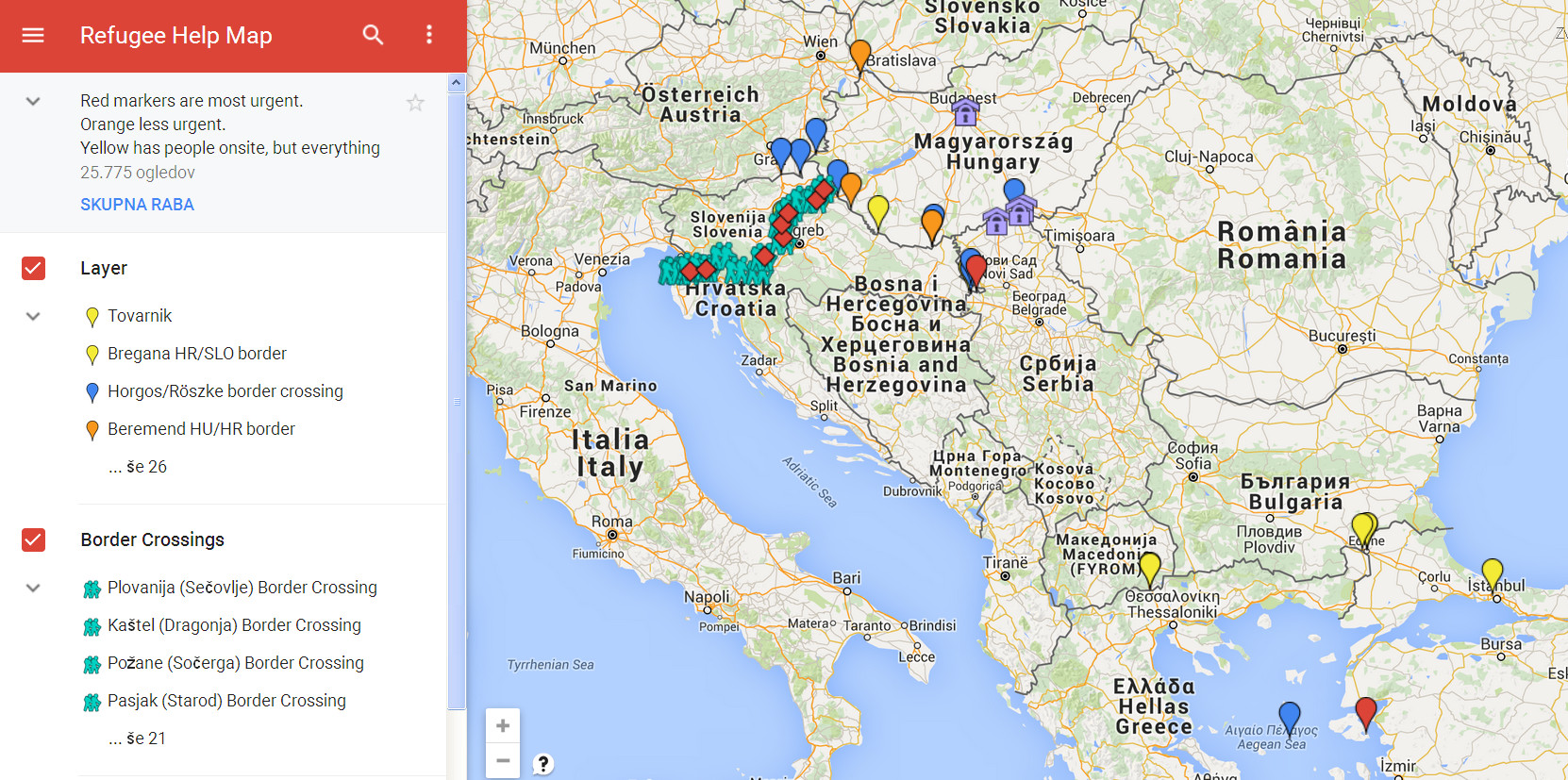Assessing whether states divided by religion are more prone to conflict than those divided by language is impossible to quantify. Although quantitative indexes of analysis have been developed[1], none have produced conclusive evidence (Kalyvas 2008: 1044). More important than evaluating the relative effect that religious or linguistic divisions have on degrees of conflict, is to look at the state, and elite-led group interaction with the state, as the primary source of these divisions. An assessment of religious or linguistic division is only relevant to understanding conflict in the context of how the state, and those acting in relation to it, internalise their control.
The statement makes three assumptions: religious or linguistic division will lead to conflict; religious or linguistic identities are fixed; and religious or linguistic conflict exists primarily between, rather than within, groups. These assumptions made in the statement can be broken down with reference to the conditions in which the fault lines of ethnic identity are made salient, rather than by examining the origins of identity itself. Implicit in the statement is a primordialist definition of identity, where assumed ascriptions of kinship[2] form the basis of a common understanding between groups (Bayar 2009: 1641). However, a constructivist views identity as a result of societal structures ‘independent of objective reality’ (Banton 1996: 9). This does not assume that ethnic difference is arbitrary, rather that ethnic difference is not fixed, or a cause of ethnic conflict; the boundaries of exclusion exist independently of the ‘cultural stuff’ of language and religion (Barth 1998: 15). It is within this framework of analysis that the conditions of the construction of religious and linguistic fault lines will be examined.
The statement assumes that ethnic groups act independently of the structures of the state; however, the interaction between individuals and the perceived legitimacy of the state are more likely to determine the definition of group cleavages. ‘Ethnicising’ analyses of conflict imposes on the subject matter a pre-existing paradigm in which religion and language are determined to play a significant role (Brubaka and Laitin 1998: 424). An example reflecting the more complex nature of language as a signifier for identity is India in the 1920s. In this case the Dravidian movement, although originally suggested as a force for socio-economic change, politicised language as a salient maker for ethnic identity in response to, and in defence of, the homogenising Northern Indian nationalism promoted by the state (Chatterjee 2005: 83).
Reactionary ethnic cleavages have also been observed in the Nigerian divide between north and south where the spread of southern power forced a re-definition of northern Nigerian identity along religious lines (Coleman 1958: 363), culminating in violent clashes in 1967 and continued incidences of sporadic violence ever since. This supports the notion that religion and language connect ‘political claims to ownership with the psychological demands for the affirmation of group worth… thereby binding elite material interests to mass concerns’ (Horowitz 2000: 222).
However, this elite manipulation of mass psychology is not an intrinsically religious or linguistic characteristic (Hobsbawm 2012: 6). In observing the occurrence of conflict between ethnic groups, there is a danger of over predicting, and over ascribing, the ethnicisation of violence (Brubaker and Laitin 1998: 443, McGarry and O’Leary 1995: 173). In his introduction to a series of essays on the role of discourse in constructing national identities, Homi Bhabha notes: ‘The ‘other’ is never outside or beyond us; it emerges forcefully, within cultural discourse, when we think we speak most intimately and indigenously ‘between ourselves’’ (Bhabha 1999: 4). Understanding conflict along religious or linguistic lines is closely linked to the role of discourse within conflict itself, which, as Bhabha observes, self-perpetuates an isolationist narrative that serves to exacerbate the boundaries that then become the subject of analysis. Therefore, the assumption in the statement of divisions defined as either primordially religious or linguistic is inconsistent with idea that identities are formed following the exacerbation of the fault lines of ethnicity by elites in response to threats of homogenising state movements, and through self-perpetuating cultural discourse. Neither of these are intrinsic characteristics of religion or language.
Case studies of ethnic dissidence demonstrate the fluidity of identity and are ignored when religious or linguistic groups are assumed to contain ‘diametric opposites’ (Gaborieau 1985: 8). If ethnic defectors are taken into account, religion or language as a factor of analysis is undermined (Kalyvas 2008: 1055). ‘Defection’ is defined as individuals becoming part of organisations in direct opposition to the perceived aspirations of their own ethnic group (Kalyvas 2008: 3). Analysts have begun to explore this phenomenon as a continuation of the struggle for dominance within groups, rather than as ideological or policy-motivated dissidence (Staniland 2012: 17).
A report for Human Rights Watch in 1996, ‘India’s secret army in Kashmir’, focuses on former militants who were ‘responsible for grave human rights abuses, including summary executions, torture and illegal detention’ (Human Rights Watch 1996: 1). Although the report also highlights coercive techniques used by the state in order to win over the former militants, it also states that ‘groups appear to operate on their own’ (Human Rights Watch 1996: 1). Staniland notes that in the early 2000s, ‘ethnic defection in Kashmir was primarily motivated by lethal battles within the militant movement’ (Staniland 2012: 30). This example provides an exception to the assumption in the statement of fixed religious or linguistic identities. Following constructivist logic, ethnic allegiance has the potential not only to be solidified but also to be dissolved (Kalyvas 2008: 1046). This undermines the notion that states divided along a particular ethnic line will experience more conflict than those divided along another; the conditions for the definition of these divisions is dependent on the structural make up of the state and on the continuing intra-group struggles for power in the war that follows.
Given the examination of the conditions for the construction of identity, it is necessary to look more closely at another assumption implicit in the statement: religious or linguistic division will lead to conflict. The theory of the security dilemma suggests that the insecurity of fault lines determine conflict where ethnic groups operate in a system without authority (Posen 1993: 29, Fenton 2004: 185). However, the assumption in the statement pre-supposes the stability of the state, with the religious or linguistic division as the source of conflict.
In Kenya in 2007, in line with the changing structure of the state during a period of democratisation, elites became representatives for ethnic divisions (Branch and Cheeseman 2008: 3). Interpreting this struggle for power within Kenya, as rooted in tribal division, ignores the effect that elite generated pro and anti-Kikuyu bloc voting had on increasing the salience of ethnic divisions (Branch and Cheeseman 2008: 3). The selectivity of ethnicity by elites, and those seeking to counter elite domination, is incremental in determining the conditions of conflict (Brass 1994: 87). It was the elites’ ability to manipulate a system in which authority was absent that allowed for a restructuring of identity along ethnic lines (Lake and Rothchild 1996: 54).
This is linked to the notion of ‘ethnification cascades’, where – in line with a game theoretical understanding of human behaviour – individuals will look to ethnic definition as a means of distinguishing preferences (Brubaker and Laitin 1998: 440). These preferences are not only fluid, but also they are affected by interactions with the state. This is demonstrated in Lisa Wedeen’s examination of consent in Syria since the 1980s (Wedeen 1998). Wedeen makes a distinction between the ‘performative’ behaviour of individuals and their true feelings of consent; language and symbols are used as a means of intruding into the private lives of individuals and encouraging them to believe the fictitious symbols of the controlling elite (Wedeen REF: 506). These symbols then form ‘shared conditions of unbelief’ whereby the myths become normalised and, as a result, reinforced (Wedeen 1998: 512). This signifies the connection between individual preferences and linguistic or religious definition, and the way in which these are shaped by interactions with the state.
Therefore, not only is it important not to confuse ‘ethnic self-interest’ with religious or linguistic difference (Allport 1958: 448), it is also essential to look at the context in which elites are acting in, in order to examine the conditions for conflict. Contrary to the assumptions in the statement, assessing the relative importance of religious or linguistic division is impossible without taking into account the structural make up of the state.
In conclusion, the underlying assumptions in the statement reinforce claims of religious or linguistic division, which do not necessarily reflect the conditions of identity or conflict. In assuming that religious or linguistic identities are fixed, the statement ignores the effect that elites and the threat of a homogenising state, or indeed the power vacuum within a restructuring state, can have on emphasising ethnic boundaries. The interaction of the individual with state structures has a significant impact, not only on the exacerbation of linguistic or religious fault lines, but also on the definition of those boundaries. Although the origins of identity remain contested, it is important not to confuse debates about the nature of identity with analysis of ethnic conflict. This confusion can lead to the assumptions made in the statement, which suggests pre-disposition to conflict by religious or linguistic groups. As shown by an examination into ethnic defection, the formation of reactionary cleavages, and the conditions in which division may lead to conflict, it is clear that whether there will be conflict in a state is dependent on the structural forces within the state, and the extent to which boundaries of ethnic difference are made salient by powerful elites.
References
Allport, Gordon W. (1958) The Nature of Prejudice New York: Doubleday.
Banton, Michael (1996) ‘The Cultural Determinants of Xenophobia’, Anthropology Today, 12/2: 8-12.
Barth, Fredrik (1998) ‘Introduction’ in Fredrik Barth (ed) Ethnic Groups and Boundaries: The Social Organisation of Culture Difference, Prospect Heights III: Waveland: 9-38.
Bayar, Murat (2009) ‘Reconsidering Primordialism: An Alternative Approach to the Study of Ethnicity’, Ethnic and Racial Studies, 32/9: 1639-1657.
Bhabha, Homi (1999) ‘Introduction’ in Homi Bhabha (Ed) Nation and Narration London: Routledge: 1-7.
Branch, Daniel and Cheeseman, Nic (2008) ‘Democratisation, Sequencing, and State Failure in Africa: Lessons From Kenya’, African Affairs, 108/430: 1-26.
Brass, Paul R. (1994) ‘Elite Competition and Nation Formation’ in John Hutchinson and Anthony D. Smith (eds.) Nationalism: A Reader Oxford: Oxford University Press: 83-89.
Brubaker, Rogers and Laitin, David D. (1998) ‘Ethnic and Nationalist Violence’, Annual Review of Sociology, 24: 423-452.
Chatterjee, Shibashis (2005) ‘Ethnic Conflicts in South Asia: A Constructivist Reading’, South Asian Survey, 12/1: 75-89.
Coleman, James Smoot (1958) Nigeria: Background to Nationalism, London: University of California Press.
ELF (2013) Ethnolinguistic Fractionalisation Index, http://www.nsd.uib.no/macrodataguide/set.html?id=16sub=1, date accessed 10/11/2013.
Fenton, Steve (2004) ‘Beyond Ethnicity: The Global Comparative Analysis of Ethnic Conflict’, International Journal of Comparative Sociology, 45/3-4: 179-194.
Gaborieau, Marc (1985) ‘From Al-Beruni to Jinnah: Idiom, Ritual and Ideology of the Hindu-Muslim Confrontation in South Asia’, Athropology Today, 1/3: 7-14.
Hobsbawm, Eric (2012) ‘Introduction: Inventing Traditions’ in Eric Hobsbawm and Terence Ranger (eds.) The Invention of Tradition, Cambridge: Cambridge University Press: 1-14.
Horowitz, Donald (2000) Ethnic Groups in Conflict, London: University of California Press.
Human Rights Watch (1996) ‘India’s Secret Army in Kashmir: New Patterns of Abuse Emerge in the Conflict, May 1996’ www.hrw.org/legacy/reports/1996/India2.htm, date accessed 10/11/13.
Kalyvas, Stathis N. (2008) ‘Ethnic Defection in Civil War’, Comparative Political Studies, 41/8: 1043-1068.
Lake, David A. and Rothchild, Donald (1996) ‘Containing Fear: The Origins and Management of Ethnic Conflict’, International Security, 21/2: 41-75.
McGarry, John and O’Leary, Brendan (1995) Explaining Northern Ireland, Oxford: Blackwell.
Posen, Barry R. (1993) ‘The Security Dilemma and Ethnic Conflict’, Survival, 35/1: 27-47.
Staniland, Paul (2012) ‘Between a Rock and a Hard Place: Insurgent Fratricide, Ethnic Defection and the Rise of Pro-State Paramilitaries’, Journal of Conflict Resolution, 56/1: 16-40.
Vanhanen, Tatu (1999) ‘Domestic Ethnic Conflict and Nepotism: A Comparative Analysis’, Journal of Peace Research, 36/1: 55-73.
Wedeen, Lisa (1998) ‘Acting “As If”: Symbolic Politics and Social Control in Syria’, Society for the Comparative Study of Society and History, 40/3: 503-523.
[1] For example the Ethnoliguistic Fractionalistaion Index (ELF 2013).
[2] ‘Kinship’ is taken to mean racial, religious, linguistic, geographical or cultural ties (Bayar 2009: 1641, Vanhanen 1999).
—
Written by: Emily Tripp
Written at: University of Nottingham
Written for: Katherine Adeney
Date written: November 2013





